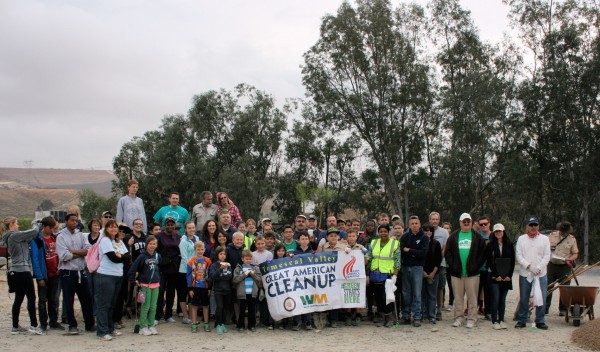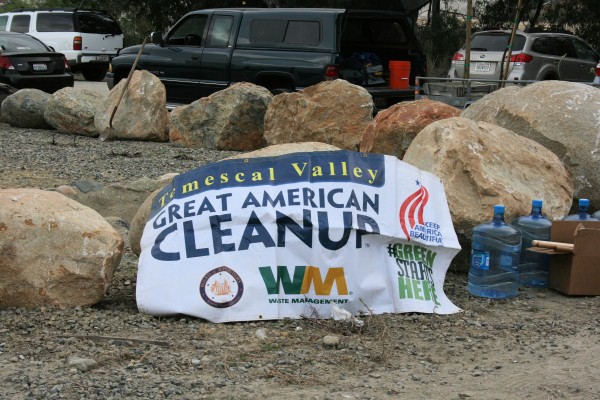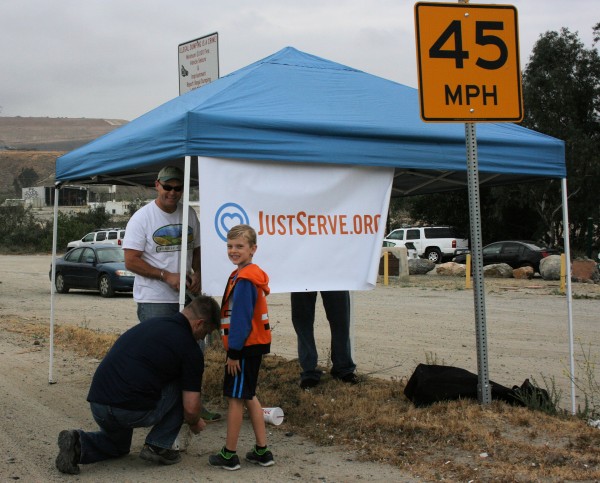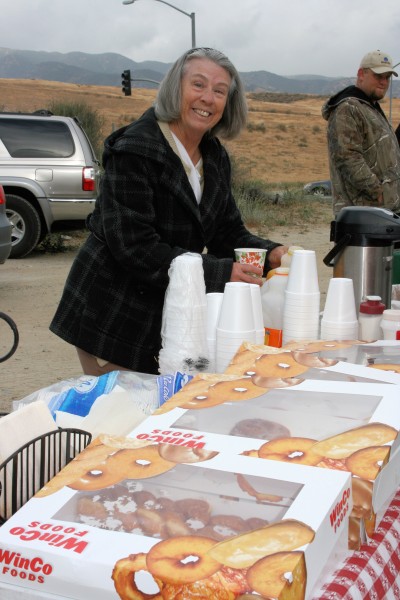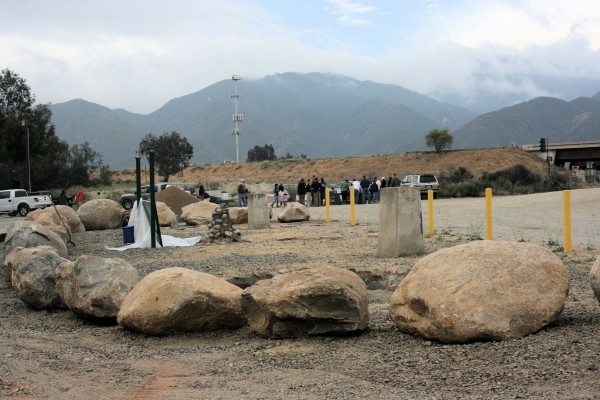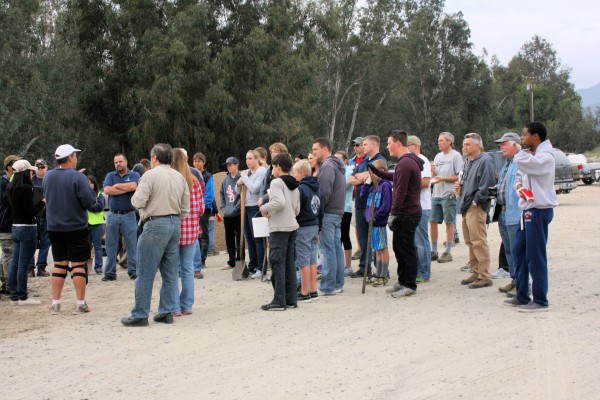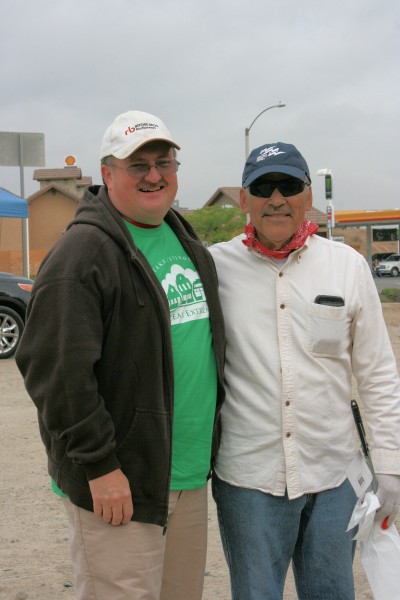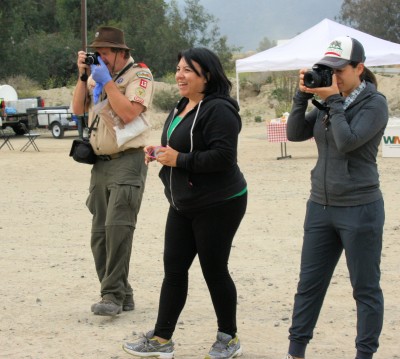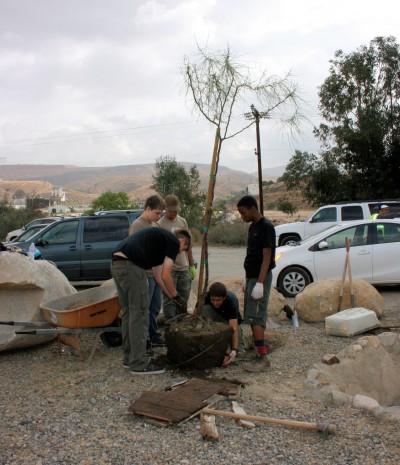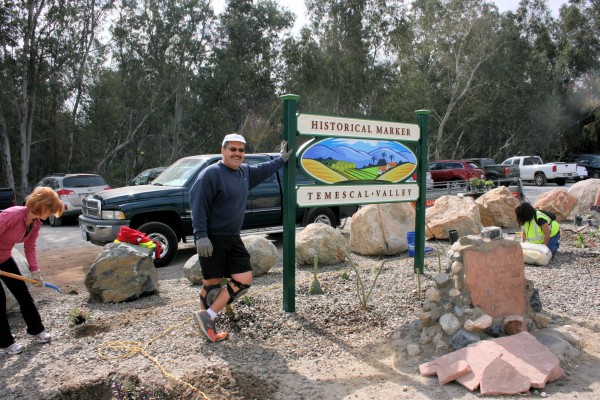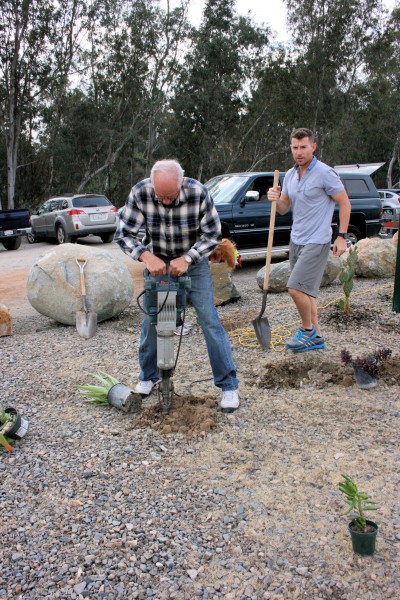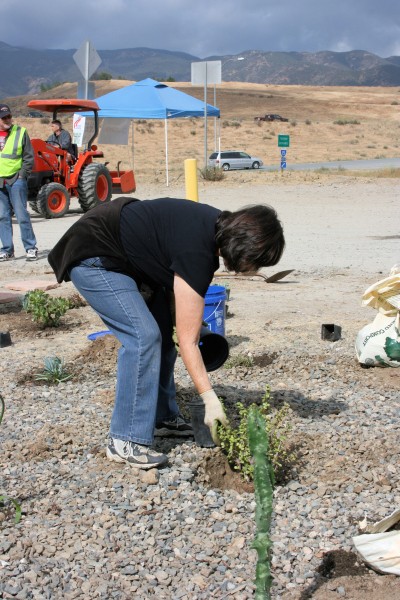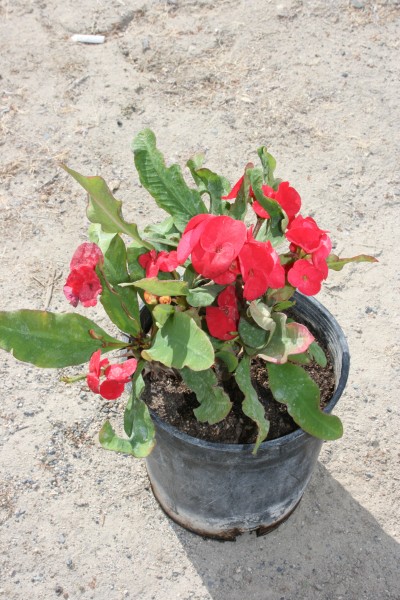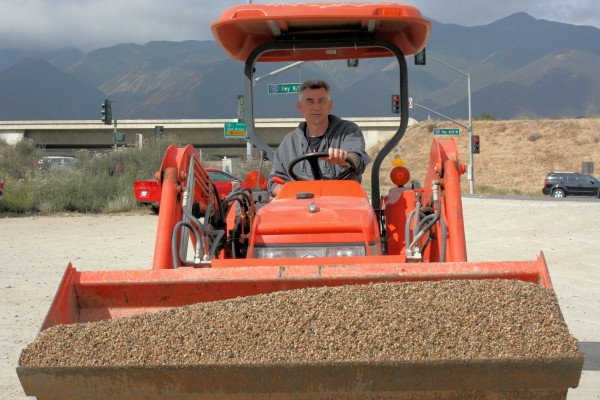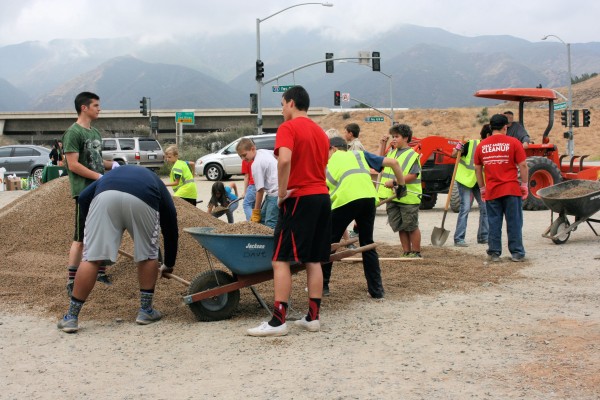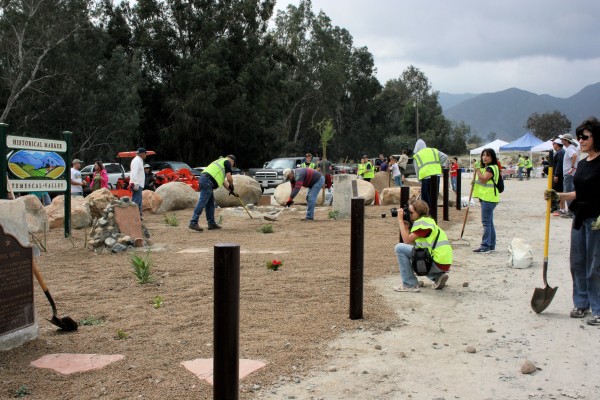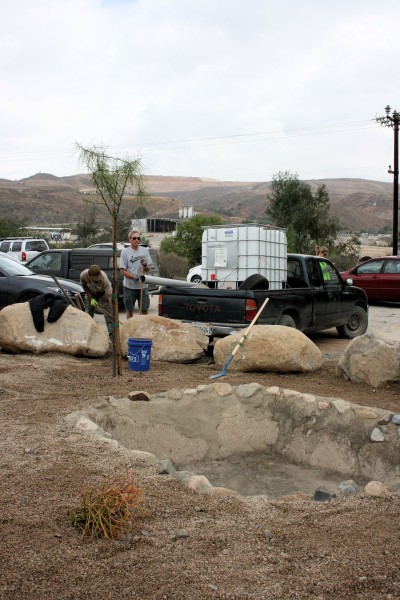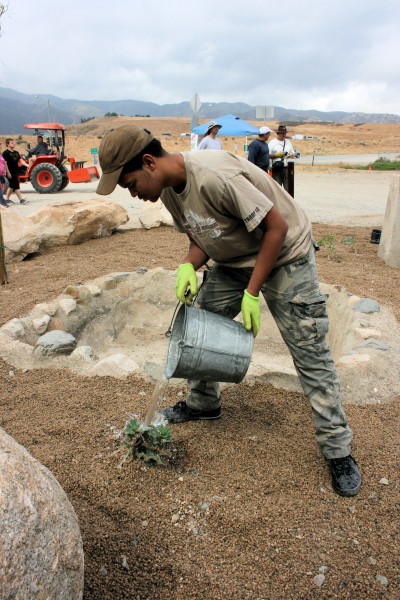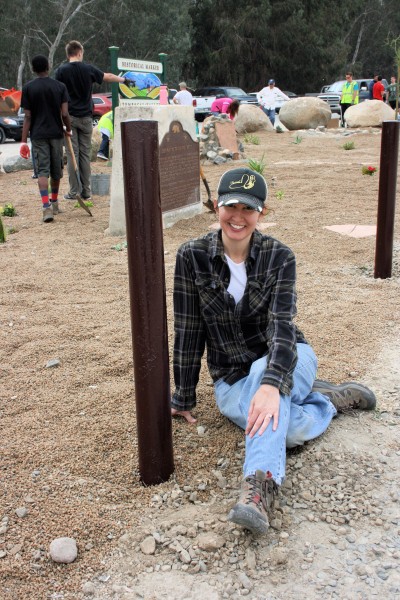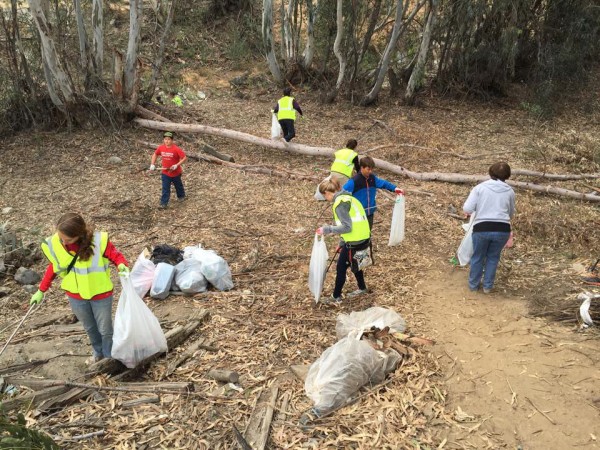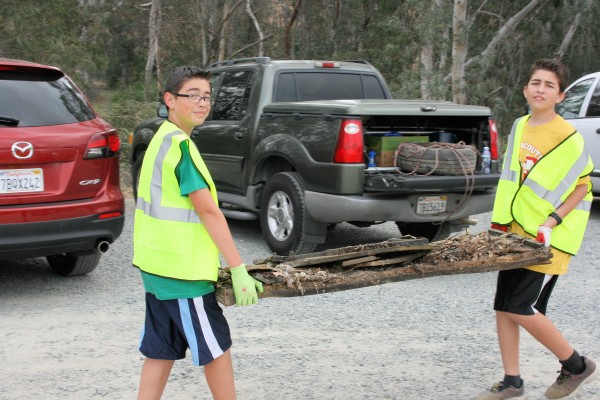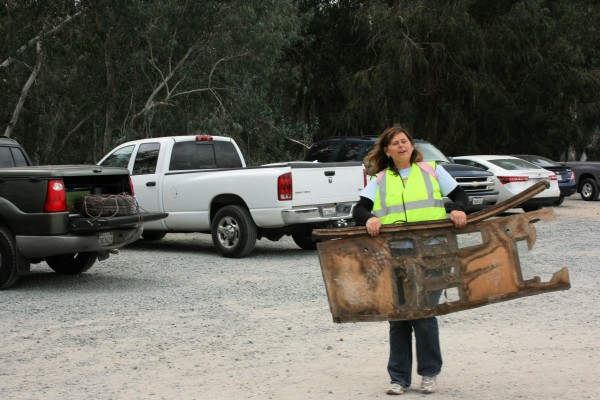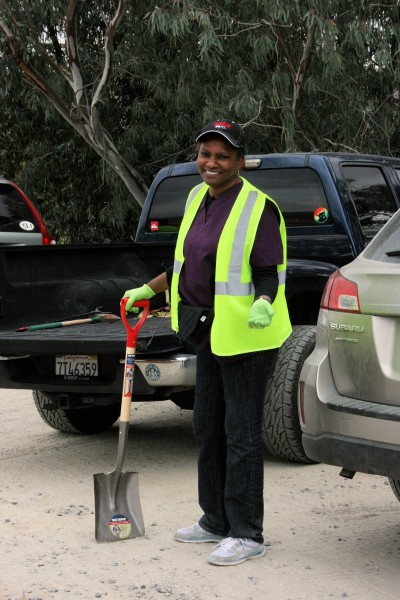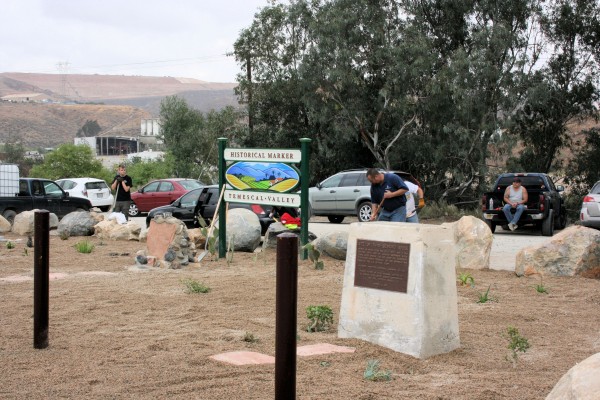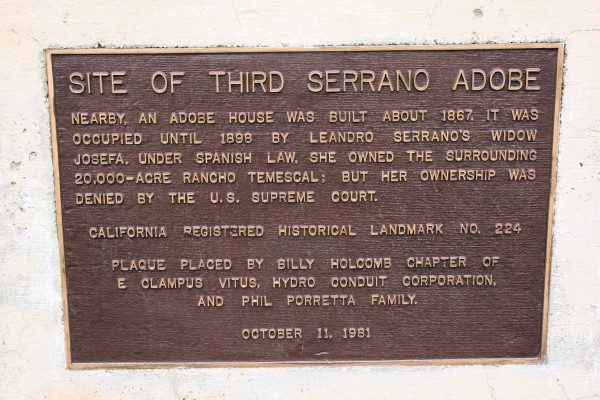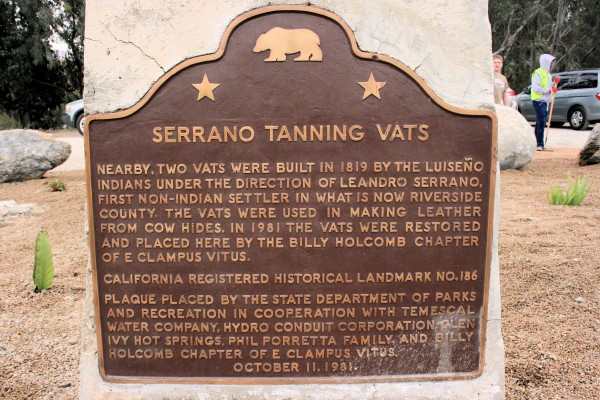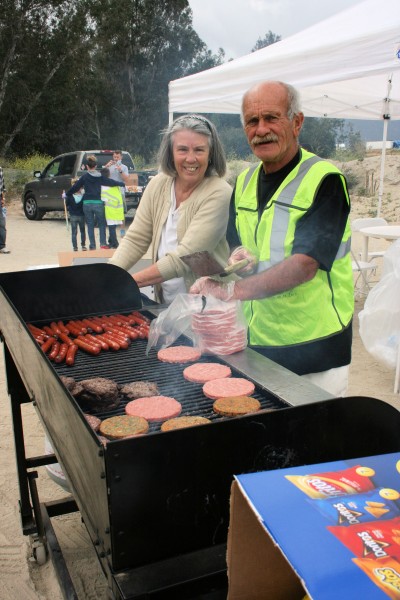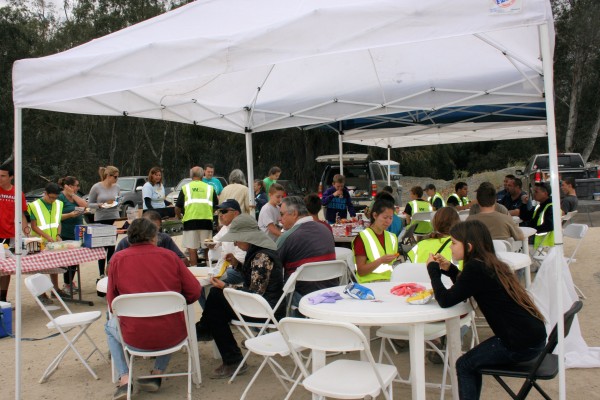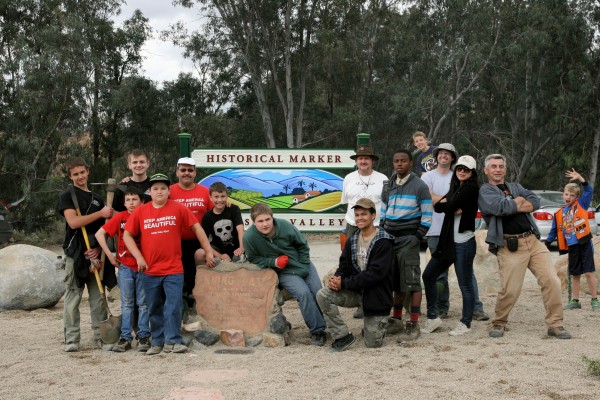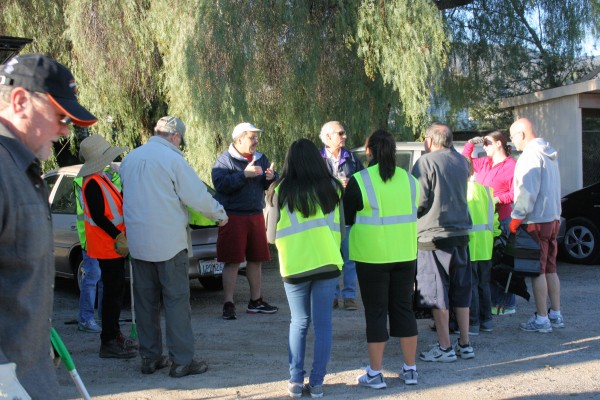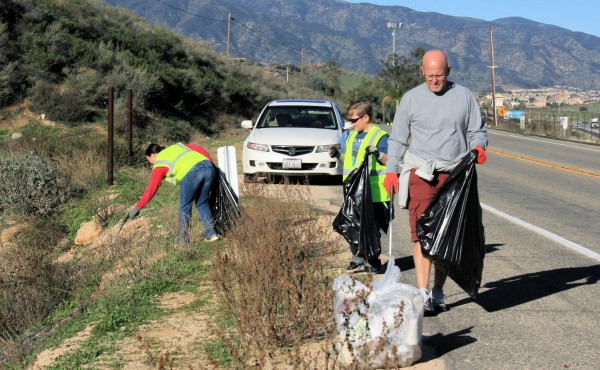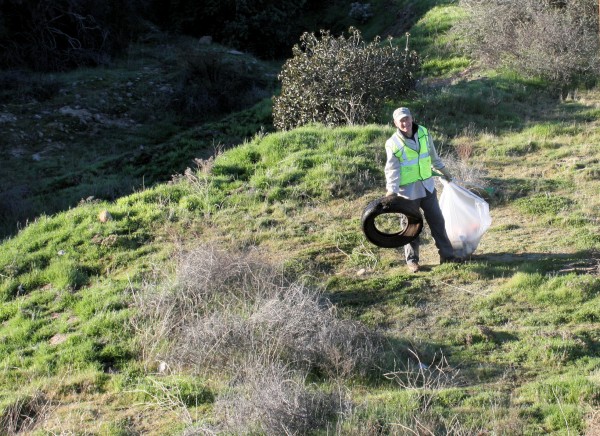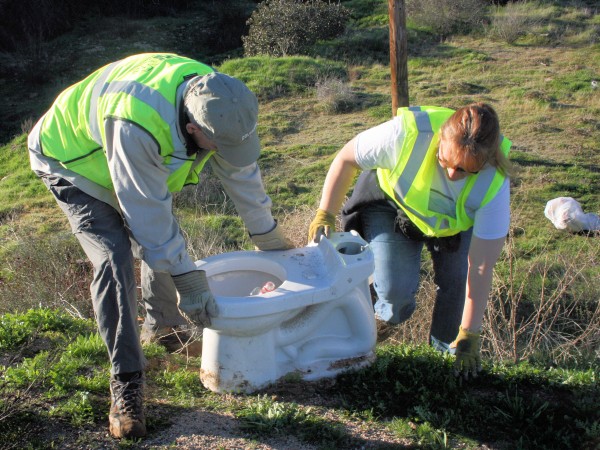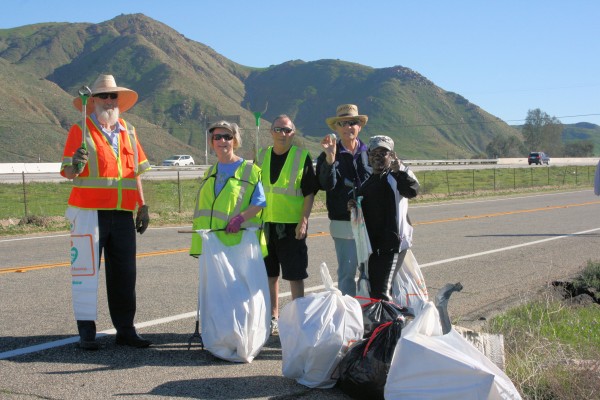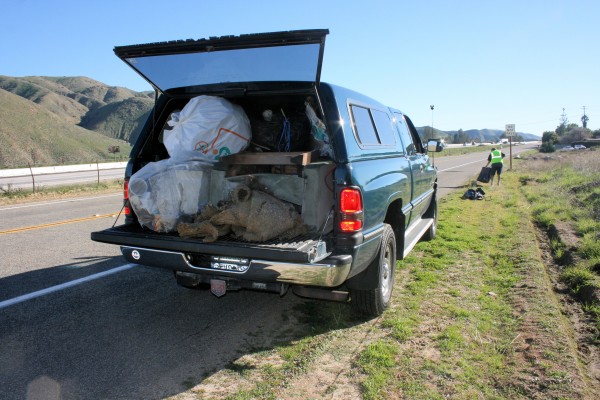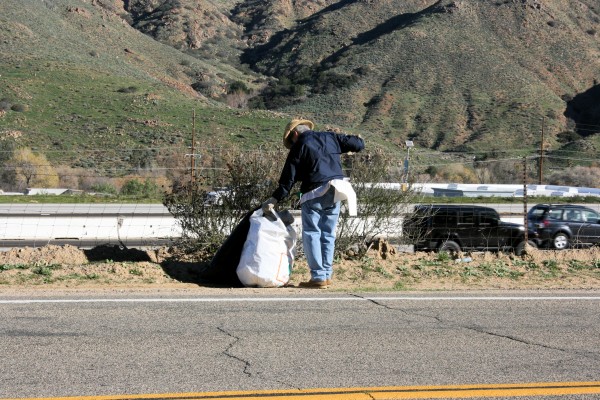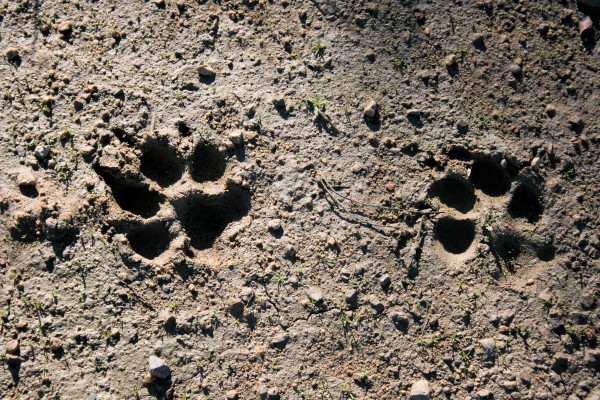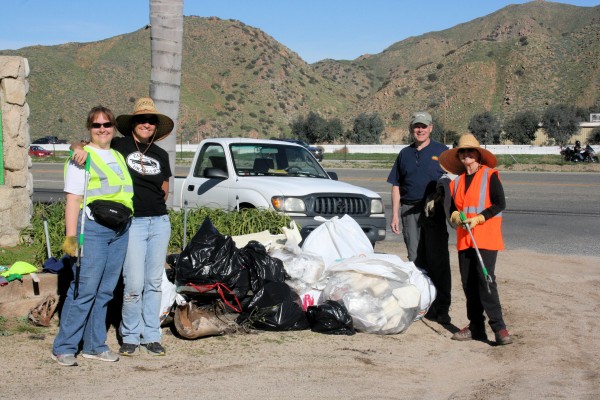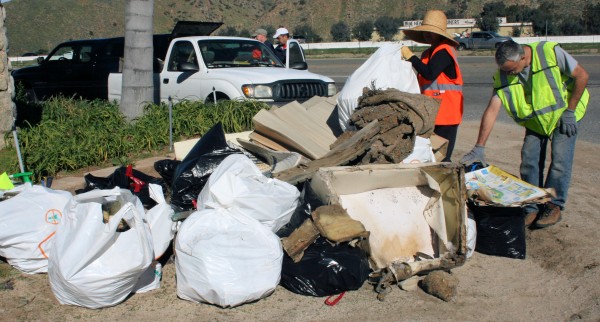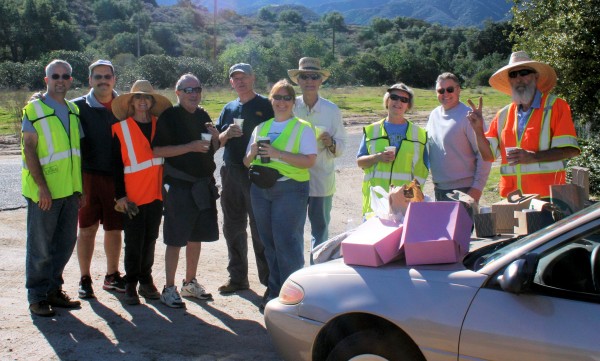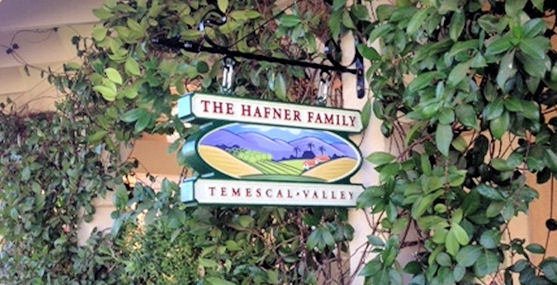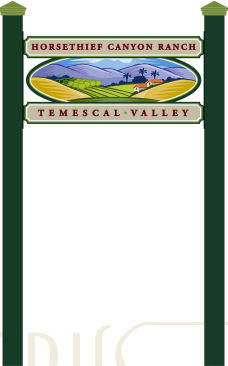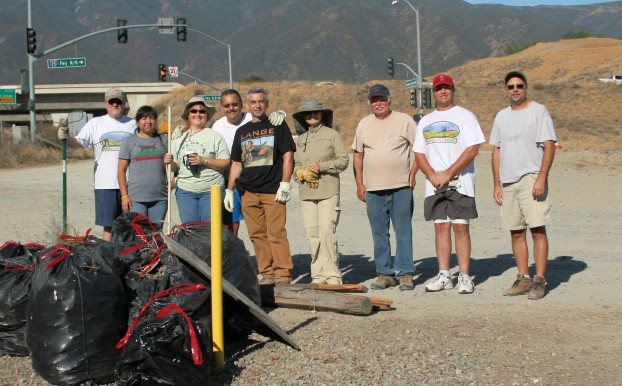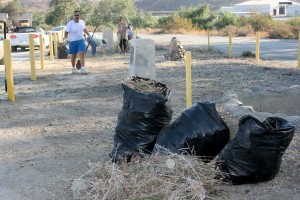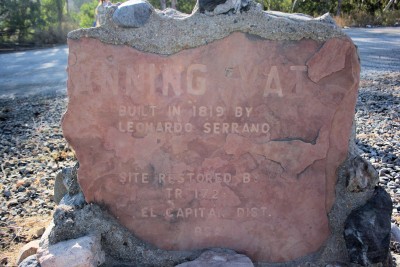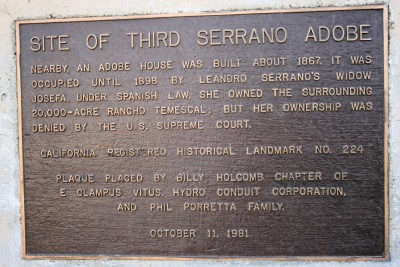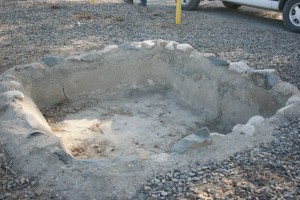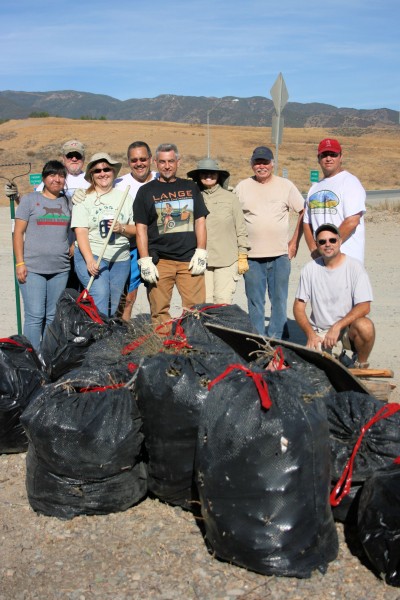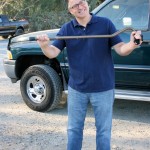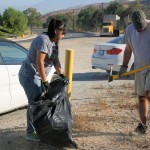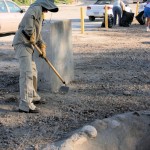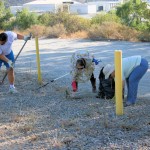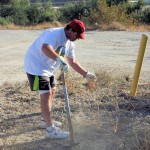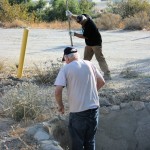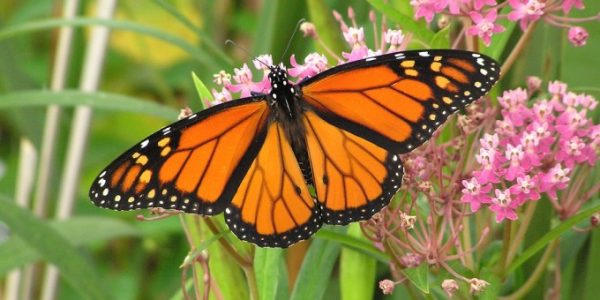 By Tracy Davis
By Tracy Davis
Identity Committee Chairwoman
Why the monarch? We see butterflies everywhere.
The plight of the monarch butterflies was brought up at our Identity and Beautification meetings in November 2015, inspired by articles appearing in the Orange County Register and The Press-Enterprise the week before.
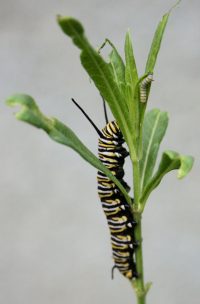
Monarch caterpillars chomp away on native milkweed.
Milkweed is the preferred plant of monarch caterpillars which hatch from eggs laid on the milkweed plants by mama monarchs. One of the reasons the monarchs are in decline is because native milkweed is becoming harder for them to find.
The 90 percent decline in the monarch population for the last 10 years was all we needed to know to start our project. Pulling both committees into the solution, I took the lead because of my love and fascination for insects, knowing full well it would be a huge project.
PARTNERSHIPS ARE FORMED
A month later, lo and behold my friend Nancy Reiter, who is Branch Manager at El Cerrito Public Library, had seen the same article and was looking into a Books2Action grant for books on the monarch subject. She contacted me to see if the We Are Temescal Valley group would sign off as a partner in the project, helping secure the grant. We got together for a committee planning session and worked with the Temescal Heritage Foundation to secure the grant as partners.
This set the ball rolling to include the Sycamore Creek Interpretive Center — a Riverside-Corona Resource Conservation District (RCRCD) nature center located in the heart of Sycamore Creek. They, too, were planning a conservation project for native milkweed.
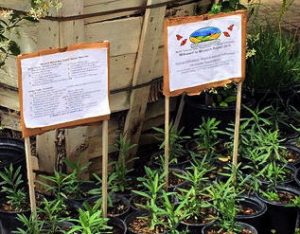
7 Oaks Nursery and The Acorn Cap, both located in Temescal Valley, sell native milkweed.
Now came our dilemma — no known local nurseries grew the native milkweed or had sources. We needed to convince our local 7 Oaks Nursery to grow the native milkweed for the project. Bringing all the facts and known sources for seeds to 7 Oaks, it took about a month to convince them it was good for the nursery and the monarchs.
In checking the seed sources, a native nursery popped up — The Acorn Cap, a nursery that specialized in California natives. It was located in Horsethief Canyon Ranch but had not yet changed its postal designation to Temescal Valley. By the end of January, we had not one but two local nurseries growing milkweed for us and the caterpillars!
Educating the people of Temescal Valley would take time. We began with the homeowners’ associations. I attended nearly all of the HOA board meetings in Temescal Valley to share the need to use native milkweed rather than other variations to bring back the monarch.
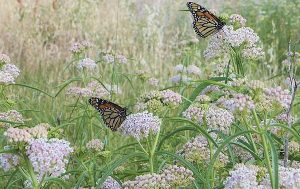
GOOD MILKWEED: Monarchs are drawn to this native milkweed — Asclepias fascicularis, and will lay eggs on it. The caterpillars that hatch will eat the milkweed, stripping it bare and leaving nothing but sticks. It goes dormant but grows back each year.
WHY NATIVE MILKWEED IS IMPORTANT
Native milkweed dies back in the winter forcing the monarchs to migrate but tropical milkweed (Asclepias Curassavica), grows year-round in our mild climate. Monarchs will not migrate where tropical milkweed is planted because it provides a winter food source for the caterpillars. Winter breeding is unwanted in our area because it exposes the butterflies to the OE (Ophryocystis elektroscirrha), parasite. This parasite either kills or weakens the caterpillars and adults, making their migration north each spring an impossible challenge in unhealthy monarchs. Planting native milkweed encourages proper seasonal migration and reduces the incidence of parasitic exposure. (Native versus Tropical? Learn more HERE)
Bottom line is that the monarchs’ milkweed habitat is dramatically reduced due to human population increases, and pesticide and herbicide use in farming and along roadsides.
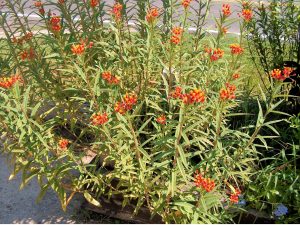
BAD MILKWEED: Tropical milkweed stays green year-round and has colorful flowers — usually red, orange and yellow. Because milkweed caterpillars can constantly feed on it, the monarchs will not migrate which leaves them exposed to a parasite.
In researching the monarchs, I found that many sites have been logging habitat, migration and population of the butterflies. Monarch Watch stands out as a good resource for plants around the nation, but the Xerces Society lists the natives best for our area, also giving us a guide to create the proper habitat for the monarch and other pollinators. (Click HERE for milkweed list.)
HOAs and residents can add to their gardens to create more habitat for the monarchs easily with our local nurseries growing native narrowleaf milkweed (Asclepias fascicularis), for the project.
We also need nectar sources to feed the adults. The nectar list is long, but look for flowers that monarchs can rest on while sipping, including composite heads, like sunflower, daisy or aster types, or clusters of flowers like lantana, verbena and pentas. Nectar sources do not have to be native, but choose drought-tolerant for our area. (Click HERE for native pollinator list.)
We hope that as more and more Temescal Valley folks decide to plant native milkweed and nectar plants to entice monarchs to their gardens that they will pay the $16 necessary to register their habitat with the Monarch Waystation Program. The Waystation registry could get our project national attention — so if you decide to register your habitat, please be sure to use Temescal Valley as your address! (Click HERE for the registration form.)
TEMESCAL VALLEY GETS INVOLVED
In trying to get the word out about the Milkweed to Monarch project we integrated Monarchs as a theme into our local events. The We Are Temescal Valley Identity Committee hosted the Temescal Valley Scavenger Hunt which had a monarch theme. The HOAs were encouraged to participate at the 15 stations around the valley. The main prize was a narrowleaf milkweed, with many other prizes donated by our local businesses.
Horsethief Canyon Ranch also had a Native Plant Sale. Hosted by Bob Hafner, chairman of the Beautification Committee and The Acorn Cap, the sale encouraged residents of the valley to plant native milkweed. The Temescal Valley Community Faire also adopted the theme of Monarchs and Melons for the 16th annual event held in May.
Our Milkweed to Monarch project is growing. We’re encouraged by our partnership with community nurseries and collaboration with educational organizations. Our success will make Temescal Valley the “Home of the Monarch!”
GET THE KIDS INVOLVED!
Here are links to help children better understand how truly incredible the monarch butterfly is — fun facts and things to do:
Journey North for Kids
Raising Monarch Butterflies
Make Felt Monarch Butterfly Wings
A Magical Metamorphosis
Thank you for your participation in this project and thanks also to:
 7 OAKS NURSERY, 21501 Temescal Canyon Road, Temescal Valley, 951-277-2927. Open 8 a.m.-5 p.m., seven days a week. On Facebook
7 OAKS NURSERY, 21501 Temescal Canyon Road, Temescal Valley, 951-277-2927. Open 8 a.m.-5 p.m., seven days a week. On Facebook
 THE ACORN CAP, California Native Nursery, Temescal Valley, 951-245-4764. On Facebook
THE ACORN CAP, California Native Nursery, Temescal Valley, 951-245-4764. On Facebook
 EL CERRITO PUBLIC LIBRARY, 7581 Rudell Road, Corona, 951- 270-5012. Open 3-7 p.m., Monday-Thursday; 10 a.m.-2 p.m. Saturday. On Facebook
EL CERRITO PUBLIC LIBRARY, 7581 Rudell Road, Corona, 951- 270-5012. Open 3-7 p.m., Monday-Thursday; 10 a.m.-2 p.m. Saturday. On Facebook
 SYCAMORE CREEK INTERPRETIVE CENTER (RCRCD), 11875 Indian Truck Trail, Temescal Valley, 951-515-2097. 10 a.m.-2 p.m., Monday-Wednesday. On Facebook
SYCAMORE CREEK INTERPRETIVE CENTER (RCRCD), 11875 Indian Truck Trail, Temescal Valley, 951-515-2097. 10 a.m.-2 p.m., Monday-Wednesday. On Facebook
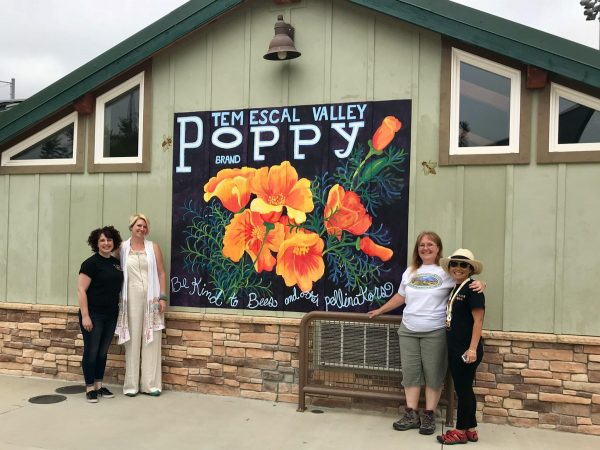 BE KIND TO BEES: The unveiling at the Faire in May of the mural painted on the Community Room at Deleo Park. Pictured, from left, Joan Tyler, El Cerrito Community Library; artist Kathryn Duncan; Tracy Davis, mural coordinator, and Nancy Reiter, Home Gardens Community Library.
BE KIND TO BEES: The unveiling at the Faire in May of the mural painted on the Community Room at Deleo Park. Pictured, from left, Joan Tyler, El Cerrito Community Library; artist Kathryn Duncan; Tracy Davis, mural coordinator, and Nancy Reiter, Home Gardens Community Library.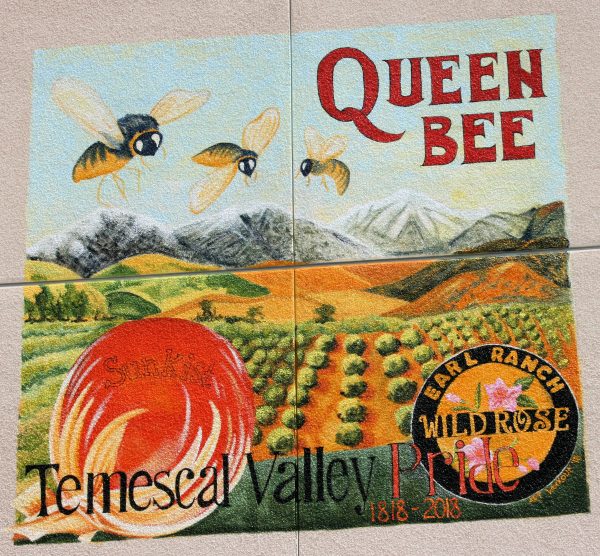

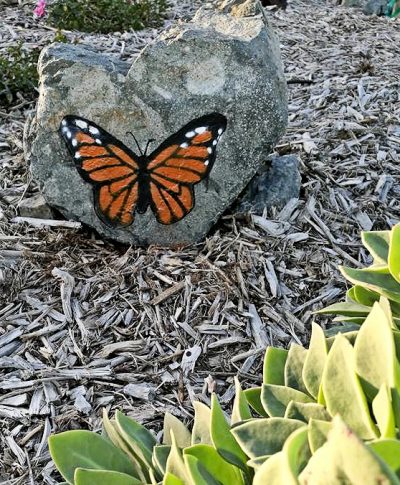
 By Tracy Davis
By Tracy Davis






